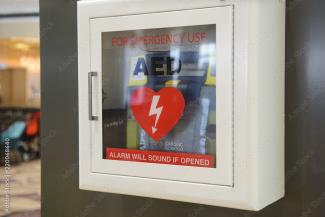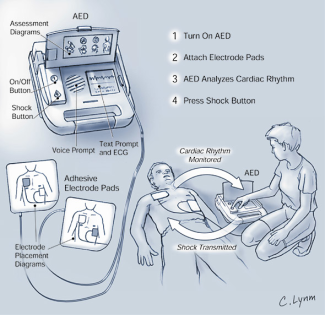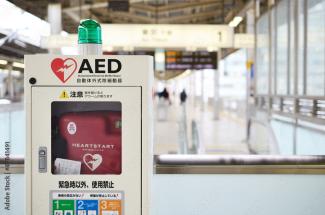Click here for a map of AED locations
An AED (automated external defibrillator) is a piece of medical equipment used to treat cardiac arrhythmias and cardiac arrest. It automatically diagnoses the hearts rhythm to determine if a shock needs to be administered to a person, and will deliver that shock if needed. As technology for this equipment has improved and the cost to purchase them has decreased over the last several years, more AEDs are being used in public and private settings.
While studies done by the American Heart Association (AHA) show that AEDs can in fact save lives, the use of onsite portable AEDs may not always be the most effective care that can be provided to someone in cardiac arrest on our campus. The Ontario Pre-hospital Advanced Life Support Study (OPALS) is the gold standard in cardiac arrest studies. It found that locations that were able to provide optimal rapid defibrillation (emergency personnel administering shock in less than 8 minutes) were effective in the survival of a person suffering from cardiac arrest. Ability of EMS to respond quickly, CPR and AED training, and the appropriate placement of maintained AEDs are important keys in the improvement of survival. Many areas on the University of Kentucky’s campus have less than an 8 minute response time for emergency personnel and therefore an AED may not be necessary. UK Occupational Health & Safety requires that departments submit an official request form for approval before procuring an AED so that a review of your specific need for having this regulated piece of equipment can be done.


